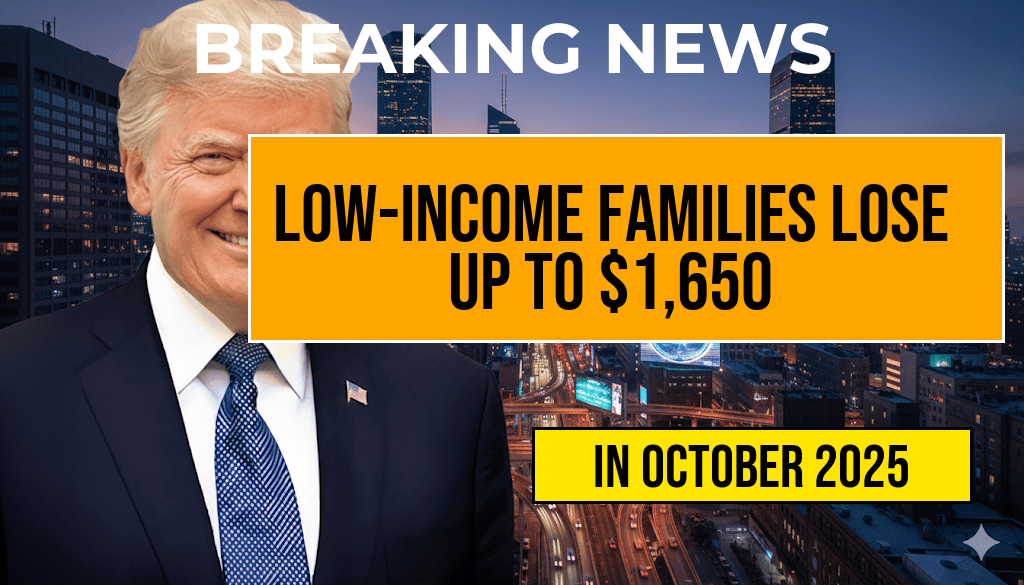Low-income families across the United States are facing significant financial setbacks following recent policy changes that could result in income reductions of up to $1,650 annually per household. The new regulations, enacted by federal and state authorities, aim to tighten eligibility criteria for various social assistance programs, including Medicaid, food stamps (SNAP), and housing subsidies. While policymakers argue these measures are necessary to curb fraud and ensure program sustainability, affected families warn that the changes threaten their ability to meet basic needs. Experts warn that the cumulative impact could deepen economic hardship for vulnerable populations already struggling amid rising living costs, prompting concerns over increased food insecurity, housing instability, and health disparities.
Overview of the Policy Changes and Their Scope
The recent policy adjustments primarily target income thresholds, asset limits, and verification procedures for social welfare programs. Federal agencies have revised eligibility criteria, requiring more rigorous documentation and, in some cases, reducing the maximum income levels permitted to qualify. Several states have also implemented supplementary measures, such as stricter residency requirements and periodic recertifications, which may lead to inadvertent disqualifications or benefit reductions for eligible families.
Impact on Low-Income Households
Analyses suggest the typical low-income household could see a decrease in annual assistance benefits ranging from $500 to $1,650, depending on family size and local cost of living. For a family of four, this reduction could translate into losing critical support for rent, groceries, and healthcare. The following table illustrates potential annual benefit decreases based on household composition:
| Household Size | Potential Reduction |
|---|---|
| Single Adult | $500 – $800 |
| Family of Two | $700 – $1,200 |
| Family of Four | $1,000 – $1,650 |
Key Programs Affected
- Medicaid: Eligibility criteria have been tightened, particularly affecting those with fluctuating incomes or assets exceeding new limits, potentially leading to loss of coverage for some.
- Supplemental Nutrition Assistance Program (SNAP): Benefits are being recalculated based on updated income thresholds, with some families experiencing reductions or disqualification.
- Housing Assistance: Changes in income verification procedures may result in fewer families qualifying for subsidies, increasing the risk of eviction or homelessness.
Responses from Advocacy Groups and Local Governments
Advocacy organizations have voiced strong concerns about the policy shifts, arguing they disproportionately impact marginalized populations already facing economic challenges. Welfare programs in the U.S. are designed to provide a safety net, but critics contend the recent changes may undermine this purpose by reducing access for those most in need.
Several city and state governments have announced measures to mitigate adverse effects, including increased outreach, temporary exemptions, and supplemental emergency aid. However, these efforts are viewed as insufficient by many advocates, who call for a reevaluation of eligibility criteria to prevent worsening disparities.
Economic and Social Consequences
Experts warn that the reductions could exacerbate existing issues such as food insecurity and housing instability. According to data from the Feeding America organization, nearly 1 in 8 Americans experience hunger, a figure expected to rise if income supports diminish further.
Research also indicates that diminished access to healthcare due to Medicaid cuts can lead to worsened health outcomes, especially for children and seniors. The ripple effects threaten to increase long-term societal costs related to untreated illnesses and educational setbacks among affected children.
Policy Context and Future Outlook
The new regulations are part of broader efforts by federal agencies to reduce government spending and combat perceived abuse of welfare programs. While some experts acknowledge the importance of fiscal responsibility, many emphasize that such measures must be balanced against the risk of deepening poverty among vulnerable groups. Legislative proposals continue to circulate in Congress, with debates focusing on reform versus preservation of social safety nets.
As the policy landscape evolves, affected families and advocacy organizations remain vigilant, urging policymakers to consider the human impact of these fiscal adjustments. The coming months will likely reveal how these changes influence the broader socio-economic fabric, especially amid ongoing economic recovery efforts.
Frequently Asked Questions
What is the main impact of the new policy changes on low-income families?
The new policy changes are expected to cause an income reduction of up to $1,650 annually for low-income families, affecting their financial stability and daily expenses.
Which families are most affected by the recent policy updates?
Low-income families, particularly those already struggling to meet basic needs, are most affected by the policy changes that reduce their income eligibility and benefits.
How will the income reduction affect the daily lives of affected families?
The income reduction may lead to decreased access to essential services, increased financial stress, and challenges in maintaining housing, healthcare, and education for their children.
Are there any assistance programs available to help families impacted by these changes?
Yes, there are various assistance programs and resources offered by government and non-profit organizations aimed at supporting low-income families during this transition.
What can families do to mitigate the financial impact of these policy changes?
Families can consider exploring additional financial aid options, budgeting strategies, and community resources to help offset the income reduction and maintain their well-being.








